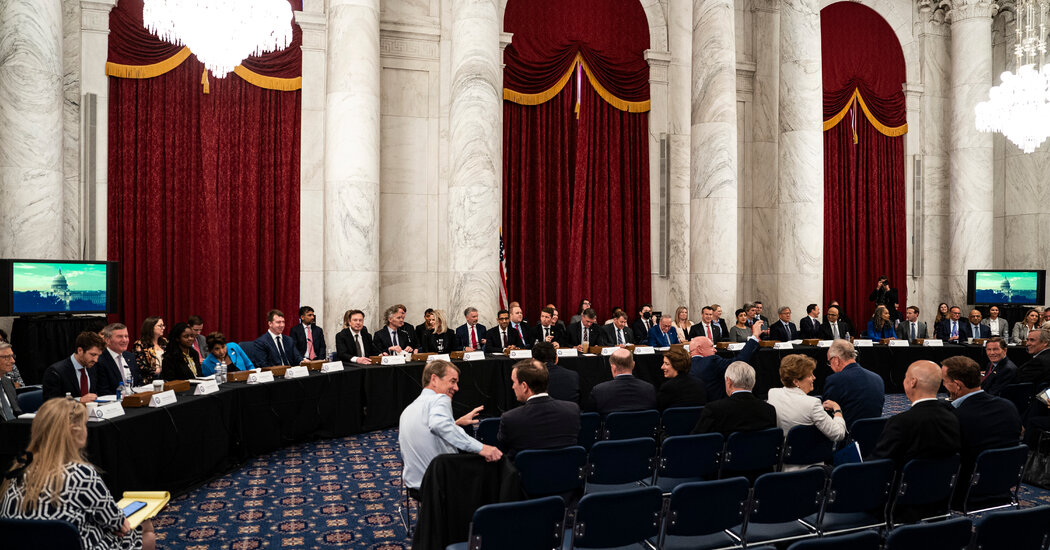
Though their attempts to keep up with developments in artificial intelligence have mostly fallen short, regulators around the world are taking vastly different approaches to policing the technology. The result is a highly fragmented and confusing global regulatory landscape for a borderless technology that promises to transform job markets, contribute to the spread of disinformation or even present a risk to humanity.
The major frameworks for regulating A.I. include:
Europe’s Risk-Based Law: The European Union’s A.I. Act, which is being negotiated on Wednesday, assigns regulations proportionate to the level of risk posed by an A.I. tool. The idea is to create a sliding scale of regulations aimed at putting the heaviest restrictions on the riskiest A.I. systems. The law would categorize A.I. tools based on four designations: unacceptable, high, limited and minimal risk.
Unacceptable risks include A.I. systems that perform social scoring of individuals or real-time facial recognition in public places. They would be banned. Other tools carrying less risk, such as software that generates manipulated videos and “deepfake” images must disclose that people are seeing A.I.-generated content. Violators could be fined 6 percent of their global sales. Minimally risky systems include spam filters and A.I.-generated video games.
U.S. Voluntary Codes of Conduct: The Biden administration has given companies leeway to voluntarily police themselves for safety and security risks. In July, the White House announced that several A.I. makers, including Amazon, Anthropic, Google, Inflection, Meta, Microsoft and OpenAI, had agreed to self-regulate their systems.
The voluntary commitments included third-party security testing of tools, known as red-teaming, research on bias and privacy concerns, information-sharing about risks with governments and other organizations, and development of tools to fight societal challenges like climate change, while including transparency measures to identify A.I.-generated material. The companies were already performing many of those commitments.
U.S. Tech-Based Law: Any substantive regulation of A.I. will have to come from Congress. The Senate majority leader, Chuck Schumer, Democrat of New York, has promised a comprehensive bill for A.I., possibly by next year.
But so far, lawmakers have introduced bills that are focused on the production and deployment of A.I.-systems. The proposals include the creation of an agency like the Food and Drug Administration that could create regulations for A.I. providers, approve licenses for new systems, and establish standards. Sam Altman, the chief executive of OpenAI, has supported the idea. Google, however, has proposed that the National Institute of Standards and Technology, founded more than a century ago with no regulatory powers, to serve as the hub of government oversight.
Other bills are focused on copyright violations by A.I. systems that gobble up intellectual property to create their systems. Proposals on election security and limiting the use of “deep fakes” have also been put forward.
China Moves Fast on Regulations of Speech: Since 2021, China has moved swiftly in rolling out regulations on recommendation algorithms, synthetic content like deep fakes, and generative A.I. The rules ban price discrimination by recommendation algorithms on social media, for instance. A.I. makers must label synthetic A.I.-generated content. And draft rules for generative A.I., like OpenAI’s chatbot, would require training data and the content the technology creates to be “true and accurate,” which many view as an attempt to censor what the systems say.
Global Cooperation: Many experts have said that effective A.I. regulation will need global collaboration. So far, such diplomatic efforts have produced few concrete results. One idea that has been floated is the creation of an international agency, akin to the International Atomic Energy Agency that was created to limit the spread of nuclear weapons. A challenge will be overcoming the geopolitical distrust, economic competition and nationalistic impulses that have become so intertwined with the development of A.I.













